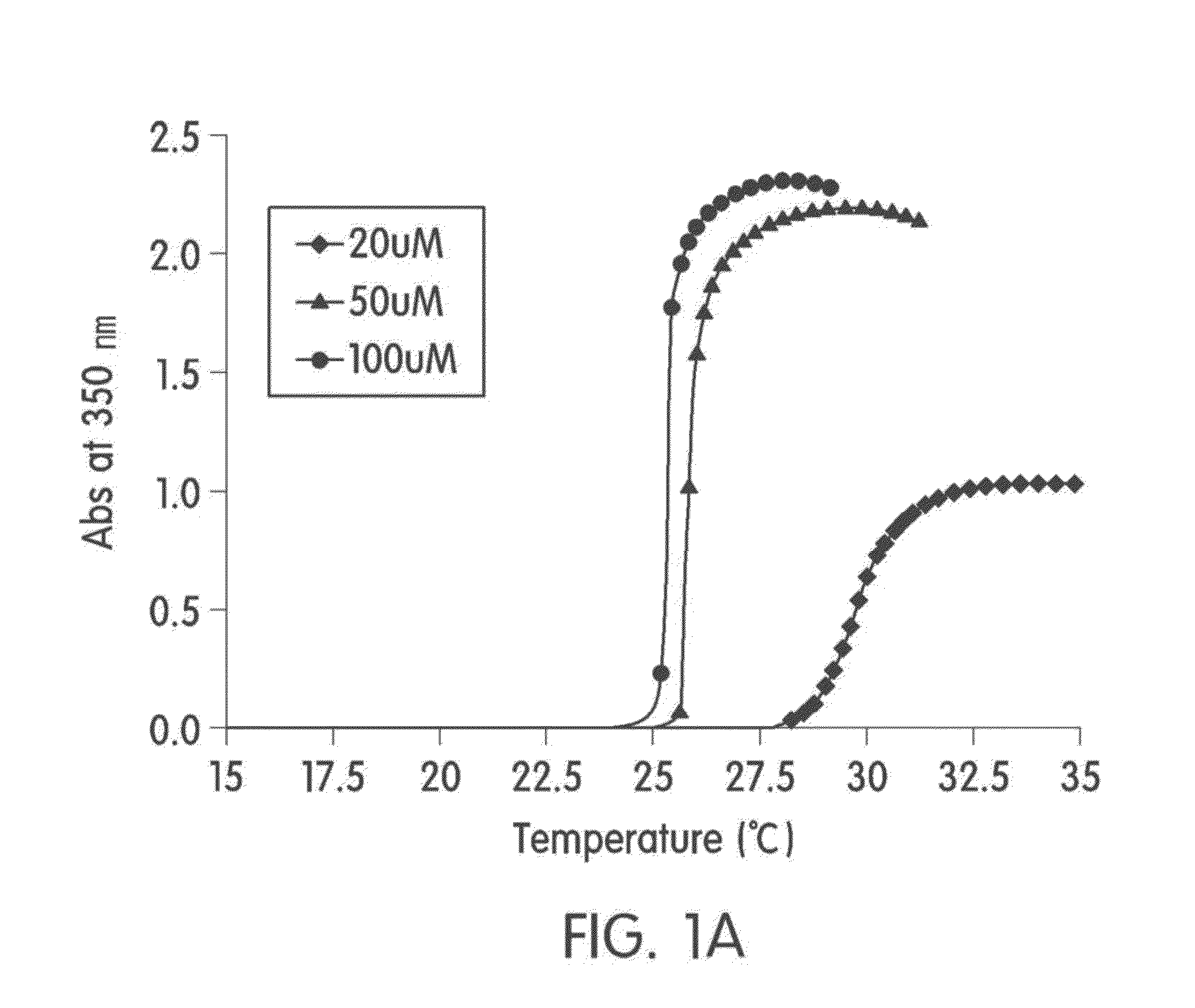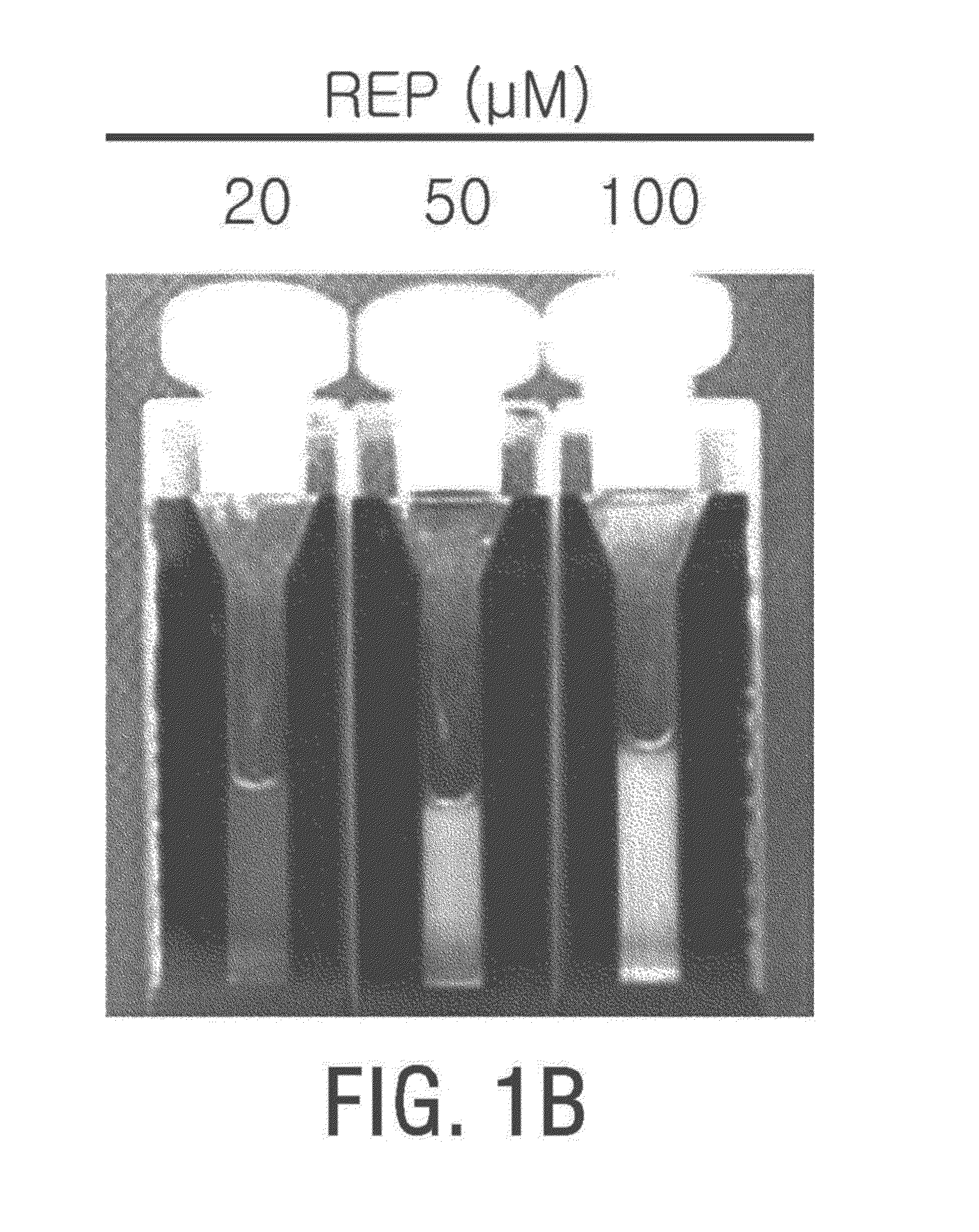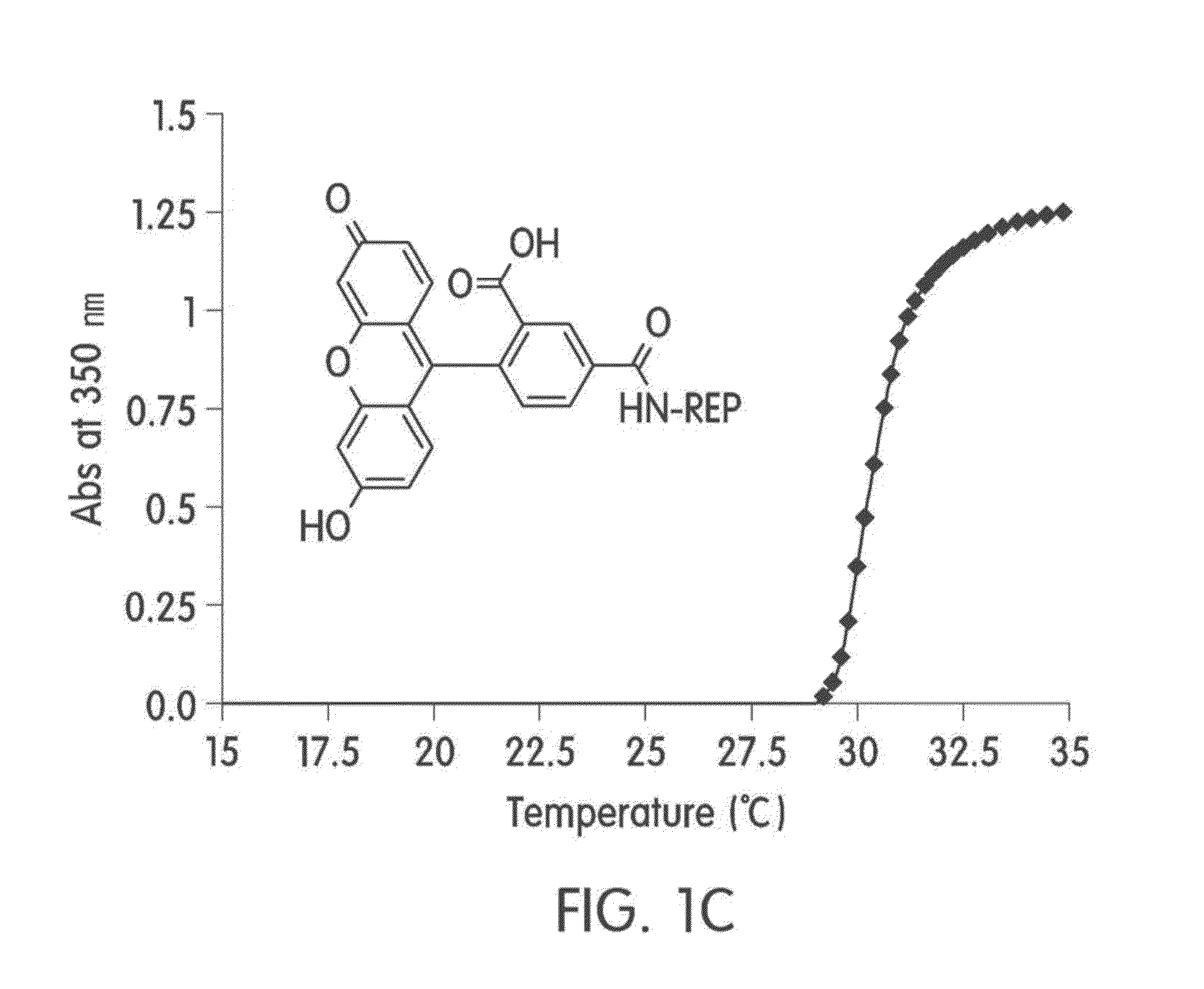Composition comprising neural cell and elastin-like polypeptide for treating parkinson's disease
a polypeptide and parkinson's technology, applied in the field of compound including neural cells and an elastin-like polypeptide for treating parkinson's disease, can solve the problems of motor disturbance, difficult to secure a massive amount of cells, and significantly low settling rate of transplanted cells and survival rate of settled cells
- Summary
- Abstract
- Description
- Claims
- Application Information
AI Technical Summary
Benefits of technology
Problems solved by technology
Method used
Image
Examples
example
Example 1
1-1 Preparation and Characterization of Elastin-Like Artificial Extracellular Matrix (REP)
[0049]Purification of REP and identification of particular transition temperature (Tt) were performed by the method same as that described in the journal (Stimulation of fibroblasts and neuroblasts on a biomimetic extracellular matrix consisting of tandem repeats of the elastic VGVPG domain and RGD motif (Jeon W B et al., J. Biomed. Mater. Res. A, 97:152, 2011)).
[0050]The REP was prepared as follows: to conjugate 5-carboxyfluorescein (Fam) at the N-terminal of the prepared REP, 5-carboxyfluorescein N-succinimidyl ester (sigma, USA) was dissolved in 580 μl DMSO such that the resultant has concentration of 5 μmol, and then 20 ml of PBS including 0.97 mol of the REP was added. The mixture was reacted for 3 hours at room temperature to prepare REP labeled with Fam (Fam-REP). The Fam-REP was purified by inverse phase transition. A degree of labeling was measured according to the protocol in...
example 2
Measurement of Survival Rate of Transplanted Cells
[0061]A survival rate of NPCs, which were transplanted to brain tissue of each mouse in Examples 1-3, was analyzed through STEM121 or human nuclei-immunohistochemistry staining. After 3, 7, 14, 28, and 70 days of transplantation, each mouse was subjected to perfusion fixation (4% paraformaldehyde / 50 mM phosphate buffered saline) via left ventricle. Then, the brain was extracted and fixed with 4% paraformaldehyde solution for 24 hours.
[0062]To prevent damage in tissue during freezing, tissue was allowed to stay in 30% sucrose at 4° C. for a day, and then the brain tissue was subjected to freezing microtome with cryostat (CM3000, Leica, Wetzlar, Germany) to become 30 um, and stored in a storing solution at 4° C.
[0063]STEM121 or human nuclei-immunohistochemistry staining was performed as follows: reaction with primary STEM121 or human nuclei antibody (rabbit anti-STEM121 or human nuclei antibody, 1:1000) followed by washing was performe...
example 3
Measurement of Effect of Recovering Function of Neural Cells
[0066]Tissue from the transplanted regions of each mouse, to which neural cells of the NPC-treated group and the NPC-REP mixture-treated group of Examples 1-3 were respectively transplanted, were isolated. In particular, an equivalent area of a striatum portion of each mouse was taken on 2, 4, and 8 days after transplantation to isolate RNA, and an expression rate of tyrosine hydroxylase, which is an indicator of dopaminergic neural cells, was investigated through qPCR (FIG. 4).
[0067]FIG. 4 is a result obtained by measuring an effect of recovering a function of neural cells transplanted to each group of mouse according to Example 3 of the present invention, and it has been found that expression rates of tyrosine hydroxylase of neural cells of the NPC-REP mixture-treated group measured at 2, 4, and 8 days after transplantation, were higher than expression rates of tyrosine hydroxylase of neural cells of the NPC-treated group...
PUM
| Property | Measurement | Unit |
|---|---|---|
| temperature | aaaaa | aaaaa |
| temperature | aaaaa | aaaaa |
| hydrophobic | aaaaa | aaaaa |
Abstract
Description
Claims
Application Information
 Login to View More
Login to View More - R&D
- Intellectual Property
- Life Sciences
- Materials
- Tech Scout
- Unparalleled Data Quality
- Higher Quality Content
- 60% Fewer Hallucinations
Browse by: Latest US Patents, China's latest patents, Technical Efficacy Thesaurus, Application Domain, Technology Topic, Popular Technical Reports.
© 2025 PatSnap. All rights reserved.Legal|Privacy policy|Modern Slavery Act Transparency Statement|Sitemap|About US| Contact US: help@patsnap.com



